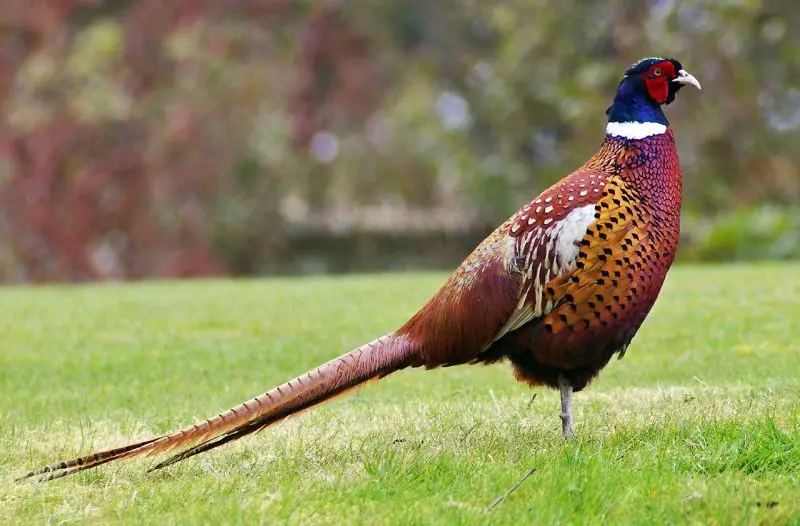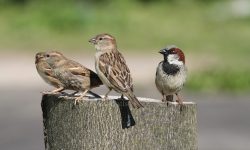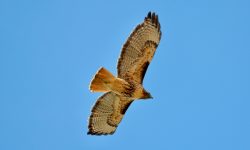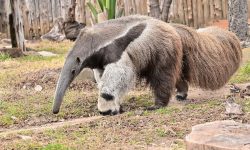The Common Pheasant (Phasianus colchicus) is one of the most widely recognized game birds in the world. Known for its vibrant plumage, especially in males, and its adaptability to various environments, this bird has been a subject of interest for ornithologists, hunters, and nature lovers alike.
In this article, we’ll explore 15 fascinating characteristics of the Common Pheasant that highlight its unique biology, behavior, and ecological importance.

1. Striking Plumage in Males
Male Common Pheasants (Phasianus colchicus) exhibit pronounced sexual dimorphism, characterized by their highly iridescent plumage. The body feathers of males display a complex interplay of structural coloration and pigmentation, producing vivid hues ranging from metallic copper and bronze to emerald green, royal purple, and golden yellow.
This coloration results from melanin-based pigmentation combined with microscopic feather structures that diffract and reflect light (iridescence), giving the feathers a shimmering, color-shifting effect depending on viewing angle and light conditions.
In many subspecies—particularly P. c. torquatus and its hybrids—males exhibit a conspicuous white cervical collar, forming a clear boundary between the iridescent green head and the darker chest. This white neck ring is a morphological marker used in subspecies identification and may play a role in mate attraction by enhancing visual contrast.
Additionally, the bare skin around the eyes is often bright red and fleshy, forming eye wattles that can expand during courtship displays. These secondary sexual characteristics are strongly influenced by hormonal levels, particularly testosterone, and serve as indicators of male fitness during the breeding season.
2. Long and Elegant Tail Feathers
The elongated and graduated tail of the male Common Pheasant (Phasianus colchicus) is one of its most distinctive morphological features, comprising up to 45–50% of the bird’s total body length. The tail typically consists of 18 tail feathers (rectrices), with the central pair being the longest and often extending well beyond the rest.
These tail feathers serve multiple functional and behavioral purposes. Biomechanically, they aid in stabilizing the bird’s movement during rapid terrestrial locomotion and short-distance flight, providing lateral balance and steering control. This is particularly crucial given the species’ predominantly ground-dwelling lifestyle and sudden, explosive flight patterns (burst flight).
From a behavioral perspective, the tail is a prominent element of sexual selection. During the breeding season, males engage in visual courtship displays in which they fan, raise, and vibrate the tail to attract females and assert dominance over rival males. The length, symmetry, and condition of the tail feathers are often used by females as indicators of male genetic quality and health status, consistent with Zahavi’s handicap principle in sexual selection theory.
In captivity and ornamental strains, selective breeding has further emphasized tail length and coloration, making the tail a key trait in both wild and domesticated populations.
3. Clear Sexual Dimorphism
The Common Pheasant (Phasianus colchicus) exhibits pronounced sexual dimorphism, both in morphology and coloration, a trait commonly observed in many galliform birds. This differentiation arises primarily from sexual selection pressures and differential reproductive roles between males and females.
Adult males display elaborate ornamentation, including vivid, iridescent plumage with colors ranging from metallic green and bronze to deep purple and gold. Additional male-specific features include elongated tail feathers, facial wattles, and in many subspecies, a white cervical collar. These traits function as secondary sexual characteristics, driven by androgenic hormones, particularly testosterone, and are critical in courtship displays, territory defense, and mate attraction.
In contrast, females exhibit a cryptic coloration, with plumage dominated by muted tones of brown, buff, and black, often in a mottled or barred pattern. This plumage serves a vital adaptive role in camouflage, especially during incubation and brood-rearing, when females are stationary and vulnerable to predation. The subdued appearance reduces visibility against ground cover, enhancing nest concealment.
This form of dimorphism is not only visual but can extend to behavioral and acoustic differences, where males are more vocal and active in territorial defense, while females are more secretive and cautious, prioritizing offspring survival.
4. Spurs on Male Legs
Adult male Common Pheasants (Phasianus colchicus) are equipped with well-developed tarsal spurs—sharp, keratinized projections located on the posterior side of the lower legs (tarsometatarsus). These spurs are sexually dimorphic, present only in males and absent or rudimentary in females, and become fully developed upon reaching sexual maturity.
Functionally, these spurs serve as weapons in intrasexual competition, particularly during the breeding season, when males establish and defend territories against rivals. During agonistic encounters, males engage in ritualized spur-based combat, involving leaping, striking, and wing-flapping, with the goal of physically dominating opponents and securing access to receptive females.
The size, sharpness, and symmetry of the spurs are considered indicators of male age, physical condition, and reproductive status. In some studies, spur morphology has been correlated with reproductive success, suggesting that females may indirectly assess male fitness through the outcomes of male–male contests.
From an evolutionary standpoint, the presence of spurs exemplifies sexual selection via male–male competition (intrasexual selection), and their development is hormonally regulated, with testosterone playing a central role in both growth and aggression levels.
5. Moderate Body Size
The Common Pheasant (Phasianus colchicus) is classified as a medium-sized terrestrial galliform bird, exhibiting notable sexual size dimorphism. Adult individuals typically measure between 50 to 90 centimeters (20 to 35 inches) in total length, inclusive of the tail, which can constitute up to 50% of the bird’s overall body length. Body mass varies widely depending on sex, subspecies, and nutritional condition, with adult males generally weighing 1.0–1.5 kilograms (2.2–3.3 lbs) and females ranging from 0.5–1.0 kilograms (1.1–2.2 lbs).
The larger body size of males correlates with their reproductive strategy, particularly in terms of territorial defense, courtship display, and dominance in male–male competition. Their robust morphology, including more developed musculature and bone mass, facilitates aggressive behaviors and increases mating success.
In contrast, females maintain a smaller, lighter build, which is adaptive for efficient foraging, reduced energy expenditure during incubation, and better concealment when nesting. Size variability can also reflect regional ecotypes and environmental pressures, as populations in colder climates tend to display slightly larger body sizes in accordance with Bergmann’s rule.
Body measurements are often used in field studies to estimate health status, age class, and sexual maturity, and are valuable for monitoring both wild and farmed populations in conservation and game management programs.
6. Ground-Dwelling Lifestyle
The Common Pheasant (Phasianus colchicus) demonstrates a predominantly terrestrial mode of locomotion, adapted to a life largely spent on the ground. Although physiologically capable of short, rapid bursts of flight, typically used as an escape response from predators, this species primarily relies on walking and running to navigate its habitat.
Morphological adaptations supporting this lifestyle include relatively strong legs with well-developed musculature optimized for efficient terrestrial locomotion, and wings that are comparatively short and rounded, favoring explosive flight over sustained flight. The flight muscles, particularly the pectoralis major, facilitate rapid takeoffs but are not suited for long-distance or high-altitude flight.
Nocturnally, Common Pheasants exhibit arboreal roosting behavior, seeking refuge in low to mid-level trees or dense shrubbery. This behavior enhances protection against ground predators during vulnerable resting periods. Roost sites are typically selected based on safety, concealment, and proximity to feeding grounds.
This dual strategy of terrestrial foraging and arboreal roosting reflects a behavioral adaptation balancing predation risk and energy efficiency, optimizing survival within diverse environments ranging from grasslands to forest edges.
7. Polygynous Mating System
The Common Pheasant (Phasianus colchicus) exhibits a polygynous mating system, characterized by a single male mating with multiple females within a breeding season. This reproductive strategy is common among many ground-nesting galliform birds and is driven by both ecological and evolutionary factors.
During the breeding season, dominant males establish and vigorously defend territories that encompass the home ranges of several females. These territories are marked and maintained through a combination of visual displays, vocalizations, and physical aggression toward rival males. The male’s ability to control high-quality territory directly influences his mating success and attractiveness to females.
Females, in contrast, are solitary nesters; they independently construct nests on the ground, typically concealed by vegetation, and are solely responsible for incubating the clutch and rearing the chicks post-hatching. Clutch sizes range from 8 to 15 eggs, with incubation lasting approximately 23–28 days.
This sexual system leads to strong sexual selection pressures on males, favoring traits such as ornate plumage, vocal prowess, and physical fitness, which enhance male competitiveness and female choice. The polygynous system also results in unequal reproductive success among males, with dominant individuals siring the majority of offspring.
8. Precocial Chicks
The Common Pheasant (Phasianus colchicus) produces precocial offspring, a reproductive adaptation characterized by chicks that hatch with advanced sensory and motor development. Unlike altricial birds, which are born helpless and require extensive parental care, pheasant chicks are covered in down, have open eyes, and are capable of leaving the nest within hours of hatching.
This precocial development enables the chicks to follow the mother soon after emergence, facilitating immediate foraging and reducing vulnerability to predation. The chicks rely on the hen’s guidance to learn feeding behaviors, including pecking at seeds, insects, and other small invertebrates, which are crucial for their rapid growth.
The energetic demands of this developmental strategy are reflected in the size and composition of the eggs, which contain sufficient yolk reserves to support the embryos through advanced organogenesis and the development of functional musculature and nervous systems necessary for early mobility.
Precociality in Phasianus colchicus represents an evolutionary trade-off: while chicks are more independent at birth, they require the mother’s protection and vigilance against predators, especially in the first weeks of life. This strategy enhances survival rates in the often open and predator-rich habitats where Common Pheasants breed.
9. Loud, Distinctive Calls
The Common Pheasant (Phasianus colchicus) produces a variety of vocalizations, with the most prominent being its loud, harsh crowing call, which plays a critical role in communication, territory establishment, and mating behavior. This call is typically described as a sharp, repetitive “kok-kok-kok” or “ka-kaaak” sound and can carry over long distances in open habitats.
The vocal apparatus of the pheasant, including the syrinx and associated muscles, enables modulation of call frequency and amplitude, allowing males to broadcast their presence effectively to rivals and potential mates. The intensity and repetition rate of the call often increase during the breeding season, coinciding with heightened territoriality and courtship activity.
Acoustic signaling serves multiple functions: it acts as an advertisement of male fitness, deterring competitors by signaling strength and vigor, and attracts females by indicating territory quality. Additionally, calls help maintain spacing between neighboring males, reducing direct physical conflict.
Research has shown that the structure and temporal patterns of pheasant calls may also convey individual identity and status, facilitating social interactions within populations. These vocal signals complement visual displays, forming an integrated communication system essential for reproductive success.
10. Omnivorous Diet
The Common Pheasant (Phasianus colchicus) exhibits an omnivorous feeding strategy, allowing it to exploit a wide variety of food resources across diverse habitats. Its diet includes a mixture of plant material such as seeds, grains, leaves, and berries, as well as animal matter, primarily insects, worms, and other small invertebrates.
This dietary flexibility enhances the species’ ability to adapt to seasonal fluctuations in food availability and supports its widespread geographic distribution. During the breeding season and chick-rearing period, the proportion of animal protein in the diet increases significantly, providing essential nutrients such as amino acids and lipids necessary for growth and reproductive performance.
The Common Pheasant forages primarily by ground scratching and pecking, using its strong bill to manipulate soil and leaf litter in search of hidden prey and seeds. Its digestive system is well adapted to processing a mixed diet, with a muscular gizzard capable of grinding fibrous plant matter and a relatively long intestine facilitating nutrient absorption.
Furthermore, pheasants have been observed to selectively consume calcium-rich items, such as small stones and mollusk shells, which aid in eggshell formation and overall skeletal health.
This omnivorous diet not only supports the pheasant’s energetic needs but also influences its role in ecosystem functioning, including seed dispersal and pest control.
11. Versatile Habitat Preference
The Common Pheasant (Phasianus colchicus) displays notable ecological plasticity in habitat selection, occupying a broad range of environments across its native and introduced ranges. It thrives in agricultural landscapes, grasslands, open woodlands, wetlands, and scrublands, provided there is a mosaic of dense ground vegetation for cover and open areas for foraging.
This species favors habitats that offer structural heterogeneity, including patches of tall grasses, hedgerows, and shrub thickets, which provide essential shelter from predators and suitable nesting sites. Proximity to water sources also influences habitat suitability, contributing to hydration and supporting a diversity of invertebrate prey.
The ability to exploit edge habitats—transitional zones between forests and open fields—enhances resource availability and reduces competition, making the Common Pheasant a successful colonizer in modified landscapes. Its habitat flexibility is a key factor behind its successful introduction and establishment in many parts of Europe, North America, and elsewhere.
Environmental factors such as seasonal changes, agricultural practices, and predator presence can influence microhabitat use and movement patterns. Consequently, pheasants often show seasonal shifts in habitat preference, moving to denser cover during winter for thermoregulation and predator avoidance.
This adaptability underscores the species’ resilience but also highlights the importance of habitat management in conservation and game management efforts.
12. Global Distribution
The Common Pheasant (Phasianus colchicus) is native to parts of East Asia, including regions of China, Korea, and Siberia. However, through deliberate introductions primarily for hunting and ornamental purposes, it has established naturalized populations across Europe, North America, and other parts of the world.
The species’ successful colonization beyond its native range is attributed to its ecological adaptability, generalist diet, and reproductive strategy, enabling it to thrive in a variety of climates and habitats. In Europe, introductions began as early as the 16th century, spreading across the continent, while in North America, pheasant introductions occurred mainly in the late 19th and early 20th centuries.
Current global distribution maps show that the Common Pheasant inhabits temperate and subtropical zones, favoring regions with sufficient cover and food resources. It is now considered a common game bird in countries such as the United States, United Kingdom, Germany, and New Zealand.
Despite its broad distribution, the species’ abundance varies locally, influenced by habitat quality, hunting pressure, and predator populations. In some introduced areas, pheasants have become integrated components of local ecosystems, though they may occasionally impact native species through competition or habitat alteration.
The worldwide spread of Phasianus colchicus highlights both the species’ importance in game management and the ecological consequences of human-mediated species introductions.
13. High Economic Value
The Common Pheasant (Phasianus colchicus) holds significant economic importance in many regions, primarily due to its role in game hunting, wildlife management, and associated industries. As one of the most widely hunted upland bird species globally, it supports a substantial recreational hunting sector that contributes to rural economies through licensing fees, tourism, and related services.
In addition to hunting, pheasants are bred extensively in game farms for stock release and commercial purposes. The game bird industry involves breeding, raising, and releasing pheasants to sustain hunting populations and maintain ecological balance in managed areas.
Economic benefits extend to agritourism, birdwatching, and cultural heritage activities, where pheasants are often emblematic species. Furthermore, pheasant farming has diversified into the production of meat and feathers for niche markets.
However, the economic value necessitates sustainable management practices to balance exploitation with conservation. Overharvesting and habitat degradation can negatively impact pheasant populations and the broader ecosystem services they influence.
Effective wildlife management programs often incorporate habitat enhancement, predator control, and regulated hunting seasons to optimize pheasant populations and preserve their economic benefits.
14. Role in Ecosystem
The Common Pheasant (Phasianus colchicus) plays a multifaceted role in ecosystem dynamics, contributing to both trophic interactions and habitat processes within its environments. As an omnivorous ground feeder, pheasants influence invertebrate populations through predation on insects, worms, and other small fauna, potentially regulating pest species in agricultural landscapes.
Additionally, by consuming and dispersing seeds of various plants, pheasants act as agents of seed dispersal, facilitating plant community regeneration and maintaining habitat heterogeneity. Their foraging behavior, including ground scratching, contributes to soil aeration and nutrient cycling, which can affect microhabitat conditions favorable for other organisms.
Pheasants also serve as prey for a range of predators, including raptors, foxes, and carnivorous mammals, thus occupying an integral position in local food webs. Their presence can influence predator-prey dynamics, impacting species diversity and abundance.
In introduced ranges, pheasants have sometimes been implicated in competition with native ground-nesting birds, which may affect community structure. Consequently, understanding their ecological role is crucial for managing both native and introduced populations to minimize negative impacts and promote biodiversity.
15. Adaptations for Seasonal Survival
The Common Pheasant (Phasianus colchicus) exhibits several physiological and behavioral adaptations that facilitate survival across seasonal environmental fluctuations, particularly in temperate climates characterized by cold winters and variable food availability.
Physiologically, pheasants undergo seasonal molt, replacing worn feathers with denser plumage to enhance insulation against low temperatures. The bird’s metabolism adjusts to conserve energy during colder months, reducing activity levels and favoring sheltering behavior.
Behaviorally, pheasants employ habitat shifts, moving from open fields to denser cover such as hedgerows, woodlands, and brush piles during winter to minimize exposure to predators and harsh weather. Roosting sites are often selected for their protection against wind and cold, sometimes utilizing communal roosts that provide additional thermoregulation benefits.
Dietary flexibility also plays a critical role; during resource-scarce winter periods, pheasants increase reliance on seeds, grains, and woody plant material, while in warmer seasons, protein-rich insects and invertebrates dominate.
These integrated adaptations collectively enhance the species’ resilience to climatic variability, enabling Common Pheasants to maintain stable populations in diverse geographic regions despite seasonal challenges.
Conclusion
The Common Pheasant (Phasianus colchicus) is much more than a beautiful bird. From its striking sexual dimorphism to its global adaptability, this species represents a fascinating mix of form, function, and utility. Whether you’re a bird watcher, wildlife enthusiast, or simply curious about nature, understanding these characteristics gives deeper appreciation for one of the world’s most iconic birds.






